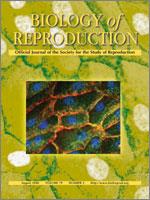Approximately half of all infertility cases can be attributed to male reproductive dysfunction for which low sperm count is a major contributing factor. The current study identified receptor-mediated lysophosphatidic acid (LPA) signaling as a new molecular component influencing male fertility. LPA is a small signaling phospholipid, the effects of which are mediated through at least five G protein-coupled receptors, named LPA 1–5. LPA1/2/3, but not LPA4/5, show high expression in mouse testis. Mice deficient in LPA1/2/3 showed a testosterone-independent reduction of mating activity and sperm production, with an increased prevalence of azoospermia in aging animals. A significant increase of germ cell apoptosis also was observed in testes. Germ cell apoptosis led to a reduction in germ cell proliferation. These data demonstrate a novel in vivo function for LPA signaling as a germ cell survival factor during spermatogenesis.
How to translate text using browser tools
1 August 2008
Age-Dependent Loss of Sperm Production in Mice via Impaired Lysophosphatidic Acid Signaling
Xiaoqin Ye,
Michael K. Skinner,
Grace Kennedy,
Jerold Chun
ACCESS THE FULL ARTICLE

Biology of Reproduction
Vol. 79 • No. 2
August 2008
Vol. 79 • No. 2
August 2008
germ cell apoptosis and proliferation
LPA and S1P
sperm count
spermatogenesis
testis




